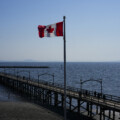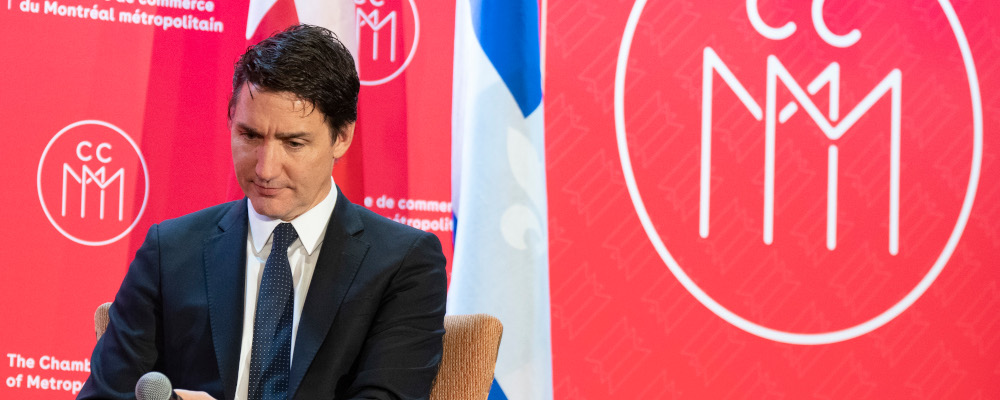Last week marked a major development in Canadian politics. Conservative leader Pierre Poilievre’s commitment to tie annual immigration levels to housing construction is the first time in more than a decade that we’ve heard a mainstream politician speak openly about limits on immigration.
Trudeau-era immigration policy has been marked by two intellectual commitments: first, cultural diversity is inherently good and involves no trade-offs, and second, a bigger population represents a key driver of economic growth and similarly involves no real trade-offs.
The first assumption remains a mainstream position among Canadian opinion and political leaders. There are few voices who are prepared to question the cultural consequences of large-scale immigration, including the risk that Canada becomes a locus for old-world political prejudices to manifest themselves. Anti-Israel protests over the past few months haven’t yet been a catalyst for that difficult yet important conversation.
The second assumption, however, has become the source of growing criticism including from a lot of mainstream voices. Economists and other experts have begun to challenge the Trudeau government’s massive increases in Canada’s immigration levels and its downward shift in the share entering the country through the points-based system. They highlight its distortionary effects on the housing market, wage growth, and business investment. Poilievre’s comments signal the diffusion of this new thinking about immigration limits into our mainstream politics.
The Trudeau government has put rising immigration levels at the centerpiece of its economic agenda. The prime minister and others around him have clearly bought into the idea of a “bigger, bolder Canada” in search of economic advantage in a world of aging demographics and slow population growth.
The numbers are quite staggering. Its annual targets for 485,000 new permanent residents in 2024 and 500,000 for the two subsequent years amount to a near doubling of its predecessor’s record. It has also overseen a nearly 50-percent year-over-year increase in the number of non-permanent residents (including student visas and temporary foreign workers) that brings the total intake to more than 1 million per year. The upshot: Canada’s population growth of 3.2 percent in 2023 was five times the OECD average—and 96 percent was due to immigration.
Although the government has seemed somewhat surprised by these numbers, they shouldn’t be understood as inadvertent. They represent a purposeful yet misguided policy agenda that conflates different types of economic growth.
As Lakehead University economist and regular Hub contributor Livio Di Matteo outlined earlier this week, there are two types of economic growth: extensive growth and intensive growth. The former reflects an increase in the total size of the economy. The latter is concerned with an increase in GDP per person which ultimately depends on whether inflation-adjusted GDP grows faster than the population.
These distinctions may seem technocratic but they’re actually key to understanding the current political moment and the ideas and impulses that underpin it. The Trudeau government has pursued a policy of extensive growth driven by high immigration rates, loose fiscal policy, and rising cash transfers. This economic model has artificially stimulated economic activity by bolstering consumer demand but it represents the policymaking equivalent of empty calories: it has failed to make the economy structurally stronger or Canadian households any richer.
Quite the opposite. There’s reason to believe that the government’s immigration policy—both its magnitude and shift to lower-skilled newcomers—is distorting business investment and undermining productivity. The Trudeau government has clearly put its thumb on the scale when it comes to the classic capital-labour tradeoff. It’s one of the key contributing factors behind Canada’s poor performance on business investment. Capital per worker is now below its 2015 levels.
The combination of rapid population growth and stagnant business investment is responsible for the economy’s lack of intensive growth. It shows up most conspicuously in the weak recovery of GDP per capita lost during the pandemic. Canada’s GDP per capita actually declined last year and remains roughly $1,000 per person and $2,500 per household below pre-pandemic levels. It’s now not expected to recover until 2027. This “lost decade” of stagnant or declining living standards will have lasting effects on the material well-being of Canadian households.

The future isn’t expected to be much brighter either. Canada’s GDP per capita growth is projected to be the lowest in the OECD for the next three or four decades. One of the biggest risks is that the rising gap between Canada and the U.S. leads to an out-migration of high-skilled Canadians in search of higher wages.
Notwithstanding these disappointing outcomes, the Trudeau government and its supporters have been dismissive of the growing concerns about Canada’s stagnant GDP per capita. Their chief argument is that it’s a flawed metric because it is neutral on distributional considerations. The risk, according to this line of thinking, is that rising national wealth disconnected from its distribution may lead to higher inequality. This progressive impulse reflects the government’s core tendency to favour equity concerns over economic efficiency.
Yet there’s a good possibility that the government is actually misreading the trade-offs. As University of Waterloo labour economist Mikal Skuterud set out in a recent email exchange, there’s a strong likelihood that higher GDP per capita growth would translate into broad-based gains, including among low-income households, rooted in something known as the “Kuznets Curve.” He explained it as follows:
The curve hypotheses an inverse U-shaped relationship in which countries who are in the early stages of economic development tend to see increasing levels of economic inequality up to some maximum, beyond which further advances in development tend to reduce economic inequality. It seems entirely reasonable to believe that Canada is on the downward sloping part of the Kuznets Curve where further gains in average living standards tend to benefit the most disadvantaged in society.
The key point here is that even if one is motivated by normative commitments to reducing inequality in our society, the answer isn’t to neglect the imperative of intensive growth. A policy agenda that sought to boost business investment and innovation in the name of increasing overall wealth wouldn’t necessarily involve a major equity trade-off. Higher GDP per capita growth is ultimately key to boosting living standards for all Canadian households.
The bigger point though is that the Trudeau government’s experiment with an extensive growth agenda rooted in high immigration and high public spending has manifestly failed to produce positive results. It may have staved off a technical recession, but it has contributed to deep recessionary conditions for Canadian living standards that are having far-reaching socio-political consequences including heightened pessimism about the future among ordinary citizens.
This growing realization has led to renewed debate about Canadian immigration policy. That’s a healthy development. We need to restore a more responsible policy that sets reasonable targets and reprioritizes high-skilled immigrants. Pierre Poilievre deserves political credit for taking a big step in this direction.
But that’s a necessary yet insufficient response to what ails Canada’s economic life. What we ultimately need is to replace the Trudeau government’s empty-calories economic agenda with a healthier mix of pro-growth policies to boost investment, productivity, and living standards.
Recommended for You

Rudyard Griffiths: Mark Carney should pay attention to Canadian bonds. Trouble is brewing at the long end of the curve.

‘We are not the United States. No one needs to own Canadian bonds’: Rudyard Griffiths and Sean Speer on Canada’s looming debt crisis

DeepDive: Bridging the imagination gap: Why Canadian businesses must rethink AI adoption now

‘Not a guide to practical action’: David Frum on 60 years of George Grant’s Lament for a Nation




